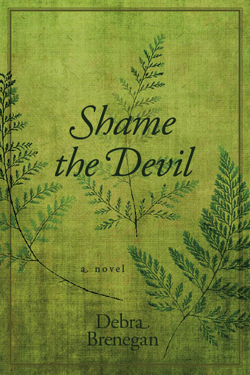* * *
 Thanks, Anne, for letting me blog for you today! I am happy to share some of my experiences researching and writing Shame the Devil.
Thanks, Anne, for letting me blog for you today! I am happy to share some of my experiences researching and writing Shame the Devil. First, if you’re writing about real people and/or historical events, your research must be as thorough and accurate as any biographer’s. Sift through official archives, of course – authors are absolutely required to thoroughly and tirelessly investigate the people, eras and events they write about using as many primary and secondary sources as possible.
That said, a different sort of research, ancillary research, is also required to ensure the veracity of historical fiction. It involves the petty little details that, if anachronistic, ruin the reader’s immersion into the story. You know the details. You’re quick to discover them yourselves. I’m talking about details like what kinds of food your characters might eat, what bills and coins they might find in their pockets. Did they have pockets or were their clothes pocketless? And if pocketless, what did they do with their money? Good fiction is detailed fiction – every detail a historical author uses must strive for accuracy.
How to do ancillary research? Here are a few suggestions:
· Surf the Internet – Don’t overlook this obvious and very useful source!
· Read – Immerse yourself in other writings of the era to let the details seep into you. Certainly read everything written by your protagonists in order to find out their favorite books, how they treated their headaches and how they took their tea. Those facts can often be found in diaries and letters. But, also read many other writers of your era to get the feel for the language and idioms used. I found trying to write in a strictly-correct mid-nineteenth-century style to be almost unintelligible to modern readership, so I invented a hybrid language – a language that sounded old but is understandable in 2011. Consistency within those choices is mandatory. For example, modern usage of the words gay or gender are as anachronistic as putting nickels into pockets before it was possible.
· Watch films set in the period you write about – film makers have the same ancillary research problems historical writers have, so often, you can benefit from the research they have already done.
· Specialty sources – There are also scores of books dedicated to materials, songs, housewares, fashion, china patterns, boot styles, etc. from an given era. I had several “Life in the 1800s” sorts of books that I’d page through when deciding what my characters would eat, how they would dress, or what tune might run through their heads.
· Visit Museums – Museums are also wonderful resources. Go and visit those out-of-the-way homes and ways-of-life displays maintained from the era you write about. I went to New York and visited the Merchant’s House Museum, which was located literally a few blocks from Fanny Fern’s former dwelling. I learned more about the “feel” of homes of that era and style – how narrow the staircases really were, how low the tables, how few the carpets – than I ever could have understood by simply browsing the Internet. Not to mention the other dozens of museum displays I devoured. Talk to curators – they are usually as delighted to help you with research as the archival librarians (who are also very helpful).
Know that some anachronism will likely make their ways into your work. This happens with even the best historical novelists. But, with solid researching, you can minimize these instances and maximize reader immersion into your story.
* * *
You can visit Debra Brenegan at her website.[Please note: If you are having trouble posting with Google ID, you can choose the Name/URL option even if you don't have a website. Copy and paste in any URL from another site, and it should work.]


